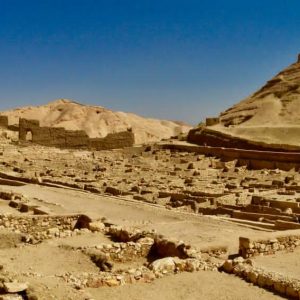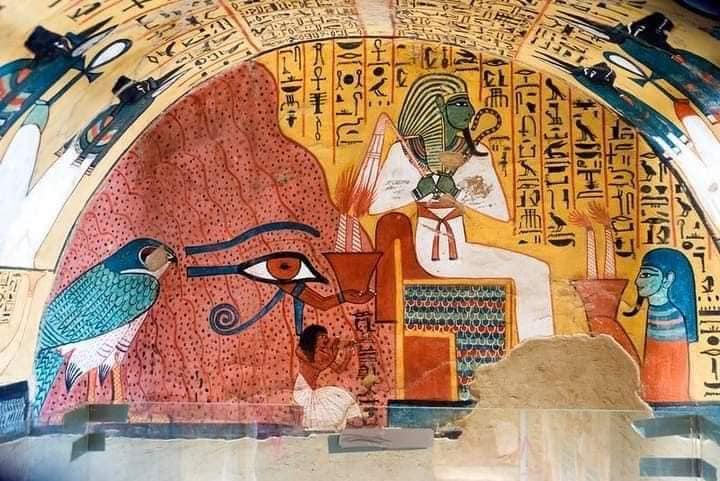Monastery of Medin a
a
Deir el-Madina was the village of the ancient Egyptian workers on the western bank of the Nile at Thebes, located between the Valley of the Kings and the Valley of the Queens. It had been closely excavated and fully published during the twenties and thirties of the twentieth century by the French Egyptologist Bernard Breuer.
Stone-cutters, masons, plasterers, scribes, painters and artists used to excavate and decorate royal and private graves in the city of the dead (cemetery) in Thebes from the early eighteenth dynasty until the end of the new kingdom. A complete picture of the daily life of a small closed community of skilled workers and their families over a time period of about 500 years.
The original wall built by Nothamesus the First surrounded a boat of about 60 mud houses built side by side and back to back along one main street from north to south. Each house consisted of a reception room, sitting room, bedroom, kitchen and basement. The boy inherited his father’s profession. The houses had belonged to one family for generations, and many elaborate family trees were erected. The workers built and decorated their own tombs above the village, as splendid as those in which they worked for their livelihood, and whole families used this one.
Much of the information came from whiteboards, limestone fragments, or ostraca (written pieces of pottery or shards) on which illiterate villagers put their lists or ideas. This community was kept cut off from the outside world so that their knowledge of the gravesites was kept secret, and all work was done for them. He started from washing until collecting wood for the fire. Still, the main necessities such as water and food had to be brought, and that any disruption to the march was causing them hardship. Strikes were known due to the non-delivery of supplies since the turbulent twentieth dynasty, and eventually, the villagers began to plunder the very graves they had helped to form.


Comment (0)